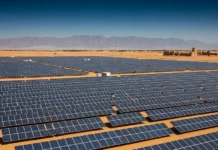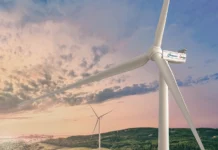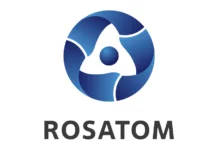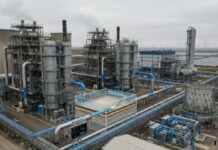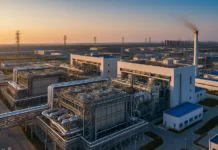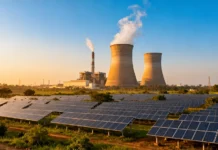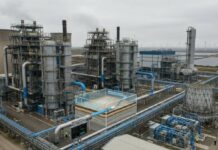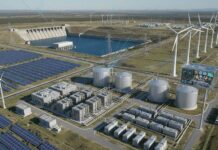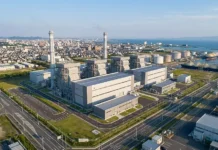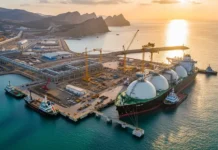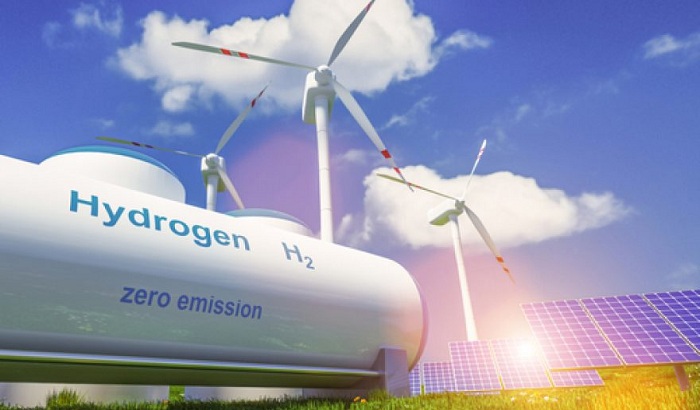As part of a plan for a countrywide grid that will begin commercial operations by the year 2032, the German utility EnBW made a commitment this week to invest one billion euros (0.08 billion dollars) in the construction of pipes that would transport pure hydrogen.
For the purpose of providing an alternative to fossil fuels, Germany is placing its bets on green hydrogen, which is generated by electrolysis using wind and solar electricity.
Some people see it as a risk, while others see it as a model for the whole globe.
This is an outline of the progress that has been made so far.
If Germany is at the center of EU hydrogen initiatives, why is that?
Because it is the largest economy and exporter in the European Union and because it relies on industry for one third of its gross national product, Germany is at the forefront of the movement toward cleaner energy that is being undertaken by the European Union.
Those who support the fuel argue that it will make it possible for German products, like automobiles or steel, to compete more successfully in the market. This comes at a time when there is growing demand from consumers and investors for items that have significantly lower carbon footprints.
As a result of the conflict in Ukraine, Germany’s supply of gas from Russia, which was relatively affordable, came to an end, making the shift to a new energy source an urgent need.
During the last 10 years, the nation’s research and development efforts have resulted in a significant number of patents for hydrogen.
What are some of the more general applications?
The transport grid is only one component of a plan that encompasses ten gigawatts (GW) of local production capacity as well as an import strategy that will draw on supplies from other parts of Europe and other countries.
In the latter half of 2024 or at the beginning of the following year, new gas-to-power production facilities that are capable of switching to hydrogen will be placed up for bid.
Utility companies are expanding their investment portfolios to include electrolysis and import facilities, while industry participants in the steelmaking and chemical industries are planning to replace hydrogen derived from coal and gas with energy that is more environmentally friendly.
Who exactly are the main characters?
Among the most significant participants are the steel manufacturers Thyssenkrupp, Salzgitter, and ArcelorMittal. These companies intend to spend billions of euros in the decarbonization of steel production, with the expectation that hydrogen will be readily available.
In addition, utilities are among the most prominent.
By the end of the year 2030, RWE intends to have a capacity of 2 gigawatts (GW) for electrolysis and 3 GW for hydrogen-ready gas-to-power. By that point in time, it had invested a total of 55 billion euros, and 25 percent of that amount was allocated to hydrogen, batteries, and flexible power production.
Salzgitter has entered into an agreement with Uniper to provide the latter with hydrogen as a result of an ammonia cracker located in Wilhelmshaven.
What are the expenses that are incurred by taxpayers and consumers?
An estimate of around €19.7 billion has been made for the overall cost of the hydrogen network, which includes pipes that are 9,666 kilometres in length.
When this is taken into consideration, along with the addition of electrolysis facilities and renewable capacity to feed electrolyzers and storage, PwC estimated that the overall expenses would range from €65 billion to €80 billion up to the year 2030.
Due to the fact that private financiers have shown reluctance up to this point, a significant portion of the funds will have to originate from the balance sheets of utility companies, from network use fees that are paid by consumers, and from tax revenues.
It is not a simple task to make a business case for hydrogen projects in Germany. According to Dirk Niemeier, a director and Lead for Clean Hydrogen and Alternative Fuels at PwC in Germany, the banks are requesting clients and requests for safe returns. If there is no prospect, investments cannot be made.
How come we are so dependent on imports?
As a result of the fact that Germany does not own its own fossil sources, the country has historically been an energy importer and already has a network of partners.
With regard to hydrogen, it is able to capitalize on the current commercial contacts it has with the United Kingdom, Norway, and the Netherlands. Additionally, it is forming new partnerships with southern Europe and North Africa, as well as with Canada, Chile, and Australia.
When compared to the cost of $3 to $8 per kilogram for imports, the cost of producing hydrogen in Germany might be as high as $10 per kilogram in 2030, according to statistics provided by McKinsey. This is due to the fact that nations that have low labor costs and inexpensive renewable power sources are able to produce green hydrogen at a comparatively low cost.
According to indices, the price of grey hydrogen, which is produced from gas and is used by Germany at a rate of around 42 terawatt-hours annually, is approximately $3 per kilogram.
What are the actions taken by other nations?
There is an expectation that Germany will get green or blue hydrogen from the United Kingdom, Denmark, and Norway. This latter product is manufactured by using natural gas in a method that involves the collection and storage of carbon dioxide that is emitted during the manufacturing process.
The countries of Italy, Spain, and the Netherlands have developed comprehensive plans for their own markets as well as the markets that are next to them.
Both the United States of America and China are making investments totaling billions of dollars.



